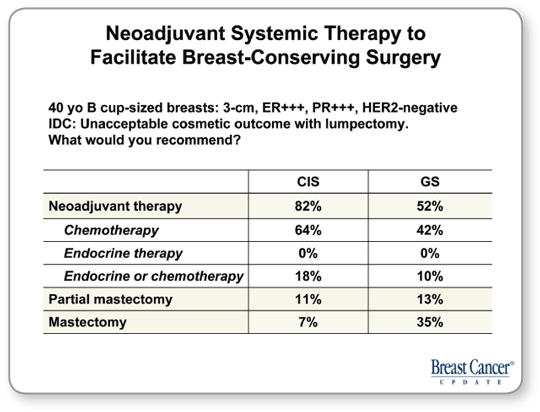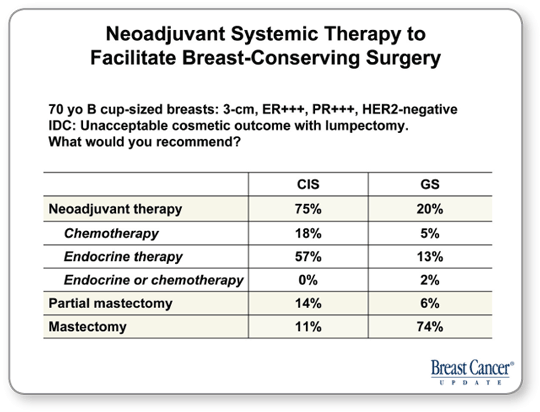|
|
||||||||||||||
![]()


FACULTY COMMENTS
![]() DR DIXON: Semiglazov and colleagues randomly assigned patients
to neoadjuvant chemotherapy versus an aromatase inhibitor and
reported similar response rates, with significantly more women
achieving breast-conserving surgery with endocrine therapy. The
reason is that pathologic changes within a tumor are different with
endocrine therapy versus chemotherapy.
DR DIXON: Semiglazov and colleagues randomly assigned patients
to neoadjuvant chemotherapy versus an aromatase inhibitor and
reported similar response rates, with significantly more women
achieving breast-conserving surgery with endocrine therapy. The
reason is that pathologic changes within a tumor are different with
endocrine therapy versus chemotherapy.
From our studies we learned that the longer you treat, the better response you obtain. We’ve been treating patients for longer durations with endocrine therapy — nine months to one year instead of three to four months. You can eventually convert approximately 70 percent of these patients — with strongly ER-positive, usually PR-positive disease — from requiring a mastectomy for locally advanced breast cancer to candidates for breast-conserving surgery.
The other point here relates to the pathology of response with neoadjuvant endocrine therapy treatment — you see a central scar as opposed to the scattered cell pattern with chemotherapy. The cancer implodes, so the size of the tumor after treatment is the size of the piece of tissue that you need to remove.
| Table of Contents | Top of Page |
Editor's Note
State of the art 2008
Neil Love, MD
Slides and Faculty Comments
Sentinel Lymph Node Biospy (LSNB) Relative to Neoadjuvant Systemic Therapy
Sentinel Node Biopsy Injection Site
Partial Breast Irradiation (PBI)
Genomic Assays: Prediction of Benefit from Chemotherapy
Hormone Receptor-Positive Breast Cancer
A CME Audio Series and Activity